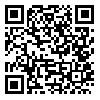Volume 3, Issue 4 (4 2005)
sjsph 2005, 3(4): 1-2 |
Back to browse issues page
Download citation:
BibTeX | RIS | EndNote | Medlars | ProCite | Reference Manager | RefWorks
Send citation to:



BibTeX | RIS | EndNote | Medlars | ProCite | Reference Manager | RefWorks
Send citation to:
Nasel saraji J, Mosavi S, Shahtaheri S, Pourmahabadian M. A SURVEYING RISK FACTORS FEATURING UPPER EXTREMITY MUSCULOSKELETAL DISORDERS BY OCRA METHOD IN A TEXTILE FACTORY. sjsph 2005; 3 (4) :1-2
URL: http://sjsph.tums.ac.ir/article-1-223-en.html
URL: http://sjsph.tums.ac.ir/article-1-223-en.html
Abstract: (8954 Views)
The exposure index was used to obtain integrated and concise assessment of the various risk factor analyzed and to classify occupational scenarios featuring significant and diversified exposure to risk factors.
In this study, an integrated procedure from four data gathering methods include observational methods (for jobs and tasks analyzing featuring repetitive movements) interview method (for asking about upper limbs musculoskeletal disorders), Nordic musculoskeletal questionnaire (NMQ) method and Occupational repetitive actions method (OCRA) were used .
A 385 persons group was studied, working in 33 various jobs in a textile factory. The results showed that, 0.86% of work tasks had low risk level, 87.93% of work task were located in moderate risk level and 11.21% of work task had a high risk level. Mean of exposure indices in four jobs include primary of spinning, spinning, primary of weaving, and weaving had significant difference (p=0.003). Also, the weaving job had a highest risk of occurrence upper extremity musculoskeletal disorders. Mean of right and left hand exposure indices showed a significant different (p<0.001). There was significant relationship between UEMSDs with age (p<0.05).
It was concluded that, the OCRA methods can be a useful method for evaluation of UEMSDs in repetitive activities.
Keywords: OCRA, upper extremity musculoskeletal disorders, risk factor of disorders, Nordic Questionnire
| Rights and permissions | |
 |
This work is licensed under a Creative Commons Attribution-NonCommercial 4.0 International License. |





